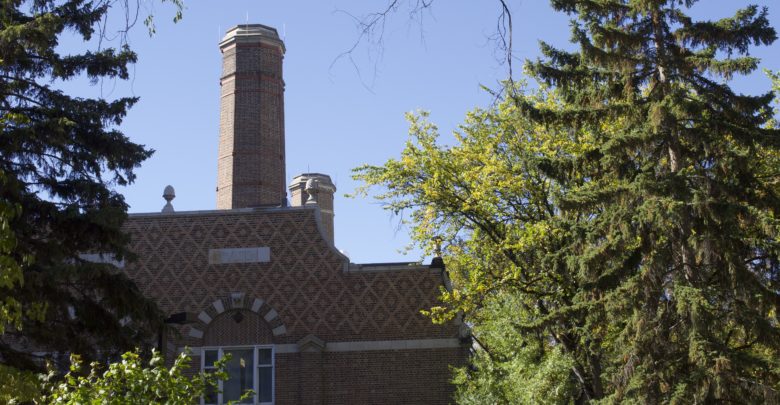 Emily Williams
Emily WilliamsWhat would you have to do in order to afford $1,000 more in tuition? How about $10,000?
That’s exactly what incoming students entering professional programs at the University of Alberta are going to have to ask themselves after the exceptional tuition increase proposal goes ahead. The likely answer is that they will either take longer to pay off their student loans — possibly years longer — or, they won’t be able to enter that program at all. The proposed exceptional tuition increases at the U of A pose a serious threat to student affordability and hurt the already damaged accessibility of professional programs.
Last spring, the University of Alberta proposed exceptional tuition increases for the Fall 2022 semester for incoming students. Due to a lack of adequate consultation however, the U of A was told by the provincial government to revisit the proposal after a more extensive student consultation process was undertaken. After a month of consultation, a yes vote on the General Faculties Council (GFC) Academic Planning Committee (APC), a yes vote on Board of Governors (BoG) Board Finance and Property Committee (BFPC), and a final yes vote at the Board of Governors, the proposal will now go back to the minister of advanced education for approval.
From the proposed increases last spring there have been changes in price for only three programs:
- JD (Law): original increase $5,265, now $3,393
- APDDS (Dentistry): original increase $22,837, now $9,244
- MBA (Business): original increase $9,635, now $10,243
The MBA is notable, as it is the only program where the proposed increase actually went up from what it was last spring.
These tuition increases have been made in the name of quality improvements, as is required by Alberta Tuition Framework and the Tuition and Fees Regulation. In each program, the money will be going towards varying things such as hiring more faculty, program resources, and more work integrated learning opportunities. In each department, between 12.5 and 20 per cent of the funds from the exceptional tuition increases have been dedicated to scholarships and bursaries. Despite the improvements however, affordability remains a concern.
Rowan Ley, president of the Students’ Union, raised at the BFPC meeting that the way quality improvements were being discussed seemed retroactive.
“I’m concerned that the cart has been kind of leading the horse in a lot of these conversations,” he said. “Particularly going back to the very beginning of discussions about exceptional tuition increases at [the Tuition and Budget Advisory Committee (TBAC)] where we set the price that we wanted to reach, and then retroactively looked at quality improvements to reach those targets rather than the other way around.”
This is concerning and leaves students wondering if tuition prices actually need to be increased this much — or if these numbers are an arbitrary price set by the university based on what they think students will pay.
At all meetings, there was a narrative that university is a competitive market, where students can reject these price increases by going to school elsewhere. Charlene Butler on the Board of Governors said that “future students can make future decisions as to where they would like to go.” At the APC meeting, Melissa Padfield, vice-provost & university registrar, said something similar, that “it’s important that we recall that there’s choice here because this is not a tuition increase that applies to any current student.”
Ley said that calling university a competitive environment is not entirely true, because there is “essentially a price fixing arrangement.”
“I don’t think we can entirely say that we’re offering people a choice between a variety of competitors when we are trying essentially to fix prices to those competitors,” he said.
The way these prices have been set seem problematic in more ways than one. The proposal mentions in multiple places Edmonton’s lower cost of living in comparison to the cities of our competitor universities. This is cited as a reason that U of A will remain competitive and keep costs for students low. For example, the University of B.C.’s (UBC’s) engineering program which will be 30 per cent lower than U of A’s newly proposed price, but the living costs are 24 per cent higher.
This doesn’t make a convincing argument to me however, as it doesn’t explain why UBC is able to offer the same program for 30 per cent less while also ranking higher. It seems like we will be paying more tuition here because living expenses here are low, and this reinforces the idea that this price increase is an arbitrary number not dependent on any tangible quality improvement.
How the increases were determined aside, the way prospective students will financially manage these increases is still uncertain. While it is true these increases will only impact incoming students, many in their undergrad have plans to pursue these professional programs afterwards. If you were planning to pursue a masters in counselling psychology, the price just doubled. As Ley raised in the BoG meeting, for current and incoming students, these increases present “major changes to their plans.”
“The amount of aid set aside in these proposals is nowhere near high enough to compensate for the fact that our province is the least affordable in the country for students when you look at debt at graduation.”
Rowan Ley
The university is not unaware that these increases will create barriers for certain prospective students and that is why the proposal sets aside funds for financial aid. That being said, these scholarships are unlikely to fill in the gap. If your tuition just doubled per semester and you happen to get a $1,000 scholarship, you will still likely be paying more than you would’ve been before these increases.
In the BoG meeting, Ley raised that these increases are also blind to the overall student aid situation in Alberta.
“The amount of aid set aside in these proposals is nowhere near high enough to compensate for the fact that our province is the least affordable in the country for students when you look at debt at graduation,” Ley said.
He cited research done by Alex Usher, the president of Higher Education Strategy Associates, that says students in Alberta graduate with the highest student debt than any other province — by a wide margin. He said the exceptional tuition increases should have taken this into account, instead of just the average tuition prices of our competitors.
“To suggest that we are more affordable because our tuition is lower is not accurate. That’s just not the case when you look at the debt burden that students in Alberta face, because we don’t have government support in the way that students in other provinces do,” Ley added.
The proposal claims to increase accessibility through a couple of different avenues. Multiple programs are promising student aid dedicated to marginalized and disadvantaged students. Additionally, the bachelor of commerce program claims that by increasing work integrated learning within courses, accessibility is improved for students who are disadvantaged and don’t have time to participate in co-op programs.
These are both good ideas, but I can’t help but wonder if they are reinforcing the cyclical nature of accessibility. The reason students don’t have time to do co-op programs is because many have to work a job throughout university because tuition costs so much. Saying that exceptional tuition increases can improve accessibility is misleading because these increases are contributing to the root of the issue: university is unaffordable.
Overall, these increases are concerning to say the least. At each of the stages this proposal went through, the only people to vote against it were the student leaders present.
“I know that we can’t change the direction of the world, but I think that many countries are making a big mistake by by putting the burden of post-secondary education more and more on individuals and families and less on society.”
Rowan Ley
While I understand that the university governance bodies are supposed to make decisions on what is in the best interest of the university, I was nonetheless disappointed by the proposal being passed. The entire process was a mess and I worry about future students being priced out of programs that already have accessibility issues.
Something Ley said at the APC meeting has stuck with me, as he pointed out that the bigger picture of university becoming exceptionally expensive will have unknown, long lasting impacts — especially on things like social mobility.
“I know that we can’t change the direction of the world, but I think that many countries are making a big mistake by putting the burden of post-secondary education more and more on individuals and families and less on society,” he said.
The heroes out of this entire process were our student representatives.
They pressed their questions on Board of Governors representatives who were often dismissive about student affordability concerns. The comments about incoming students being able to choose other university options, for example, came across as insensitive to the realities of the lives of students. Ley addressed this, pointing out that university is not always like a competitive market for students. “It’s more like housing in the sense that often people cannot move to get a cheaper product because they have to stay where they live due to family or the jobs that they may have or a variety of other concerns,” he said.
“The suggestion that if people cannot afford this, they should simply move is true on certain levels, but it does reduce the accessibility of higher education a significant amount.”
Student representatives also pushed for more consultation the first time around and got it. Throughout the process they continually raised their concerns and demanded answers from the university. And most importantly, they did not give in to the narrative that university has to be expensive.
While the proposal passed BoG at the end of the day, I hope that the outcries of students proved that affordability still does have value.




